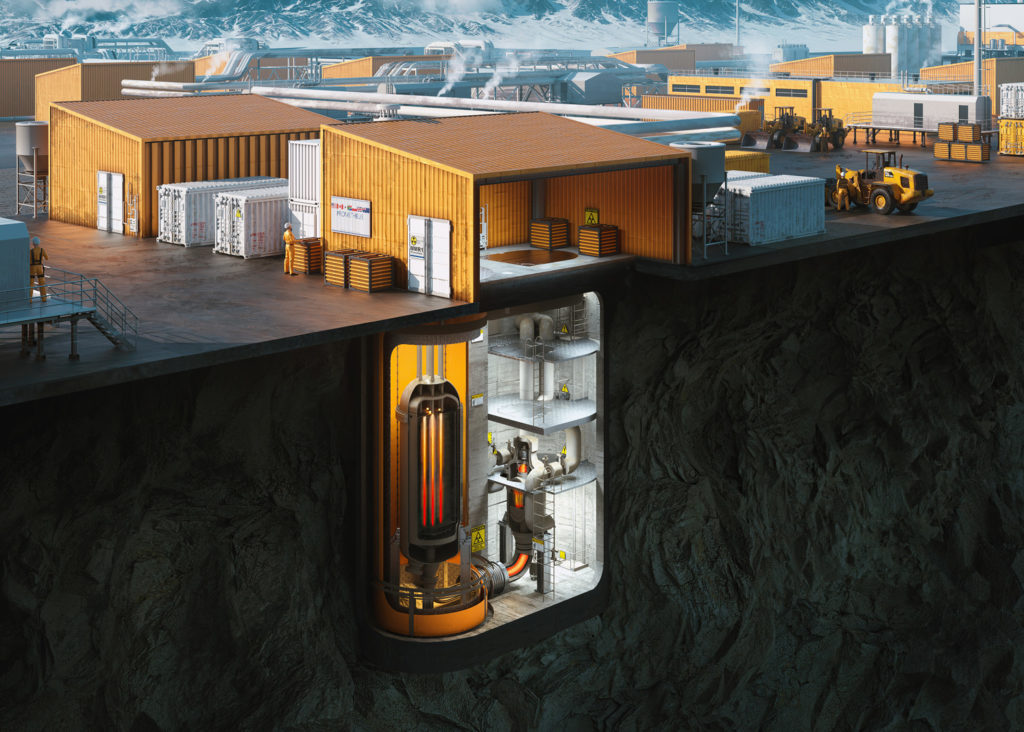Very small modular reactors (vSMRs) could provide clean, economic and reliable power and heat to remote northern mines and surrounding communities in Canada, according to a recent study completed by Ontario Power Generation (OPG), Canadian Nuclear Laboratories (CNL), and Mining Innovation, Rehabilitation, and Applied Research Corporation (MIRARCO).
The feasibility study, looking into vSMRs ability to reduce or eliminate reliance on diesel, found that the most economical energy mix was for vSMRs to provide 90% of the baseload power required for mining operations and associated uses, with only peak demand periods managed through use of diesel generation, reducing emissions by 85%. Emissions could be lowered further by adding other renewables to the mix, decreasing the diesel component, at a slightly increased cost, it said.
SMRs are defined as producing up to 300 MW of power, while vSMRs produce up to 10 MW of power per module. These small modular reactors are more flexible than conventional reactors, better enabling them to work within a diverse energy grid alongside intermittent technologies such as solar or wind, according to the study partners. They can also be used for applications like process heat or hydrogen production, which help enable further industrial sector decarbonisation.
The technology is seen to have potential applications in Canada’s mining sector, where there are 10 off-grid operating mines. Most of these are served by diesel generators, which offer reliable, fast-acting, easy-to-vary output but are GHG-emitting.
Advantages of a vSMR, producing less than 10 MW, include:
- Their small size, making them easier to transport and install in remote communities, and scalable to meet changing needs;
- Their ability to safely, reliably produce power;
- Long operating life without the need for an onsite inventory of fuel; and
- Short installation period due to their modular construction and factory fabrication.
Global First Power, a joint venture between OPG and USNC-Power, is the most advanced vSMR project in Canada, according to the study. The project recently received Canadian Nuclear Safety Commission approval to begin a technical review. Subject to federal government financial support, the next step in the process is to construct a demonstration vSMR at CNL’s Chalk River campus.
This demonstration project will serve as a model for future SMR deployments, as called for in Canada’s SMR Roadmap and Action Plan, by producing competitively priced clean energy ideally sized for remote communities and heavy industry such as mining and resource projects.
Robin Manley, Vice President of New Nuclear Development at OPG, said: “Nuclear power and SMRs play an enormous and critical role in meeting Canada’s climate change goals. This study demonstrates that not only can a vSMR dramatically reduce emissions in an industry that currently relies heavily on diesel, but it can do it in a cost-effective way.”
François Caron, Director of the Energy Center and Bruce Power Chair for Sustainable Energy Solutions, MIRARCO, Mining Innovation, added: “This study paves the way for the future of mining: not only does it show that vSMRs could provide a cost-effective and reliable energy source, it demonstrates that vSMRs are a long-term solution that can help diversify and intensify a mining operation while also providing a surplus that will benefit communities in the area.”
(Pictured is a cross section of the USNC-Power Micro Modular Reactor™ (MMR™) unit (CNW Group/Ontario Power Generation Inc))











